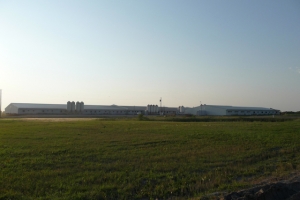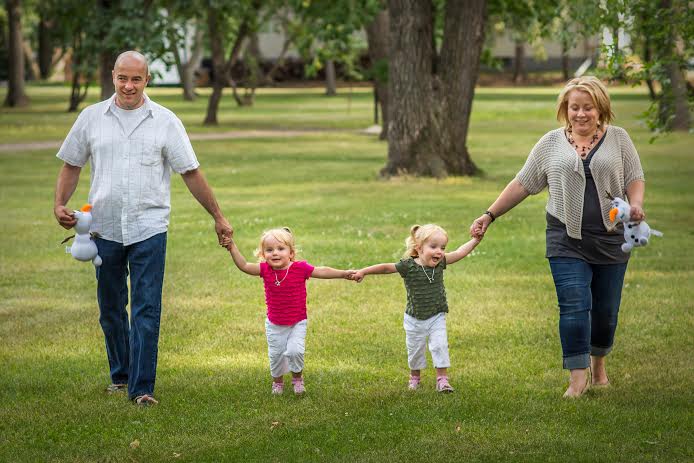His dream was always to farm, so in October of 2011 Jeroen Van Boeckel, a grain and hog farmer – at Stephenfield got his chance at the age of 28 coming to Canada and buying his first 700 sow farrow to finish farm. In Europe, he served customers for a genetics company.
“I was the youngest hog farmer at that time, and I still think I am today,” laughs Van Boeckel who shut down that older hog farm built in 1970, bought a 700 sow to wean farm near Fannystelle, MB in 2004, and added a finishing barn at the same location in 2008.
He bought a second hog farm, a 1,200 sow, farrow to finish operation southeast of Winkler, MB from the bank last fall. Even during the difficult times of the last five years, he has increased production from 700 sows to 2000 sows today, a bigger debt load, but has no regrets, simply fantastic. He owns some land but rents it all out to focus on the hogs that usually keep him busy.
“I had a 700 sow farrow to finish where I live here at Stephenfield,” says Van Boeckel. “It was old and needed a new manure storage to comply with the environmental regulations. But by the time I’d be done building that manure storage, I’d still have 700 sows in a really old barn.”
He could pay the same for the barn south of Winkler, and double the sows, a 900-day manure storage and decided that was a much better route to take.
That is the whole backward premise of the hog expansion moratorium in Manitoba. A farmer can rebuild his existing barn, as long as he doesn’t increase the number of pigs.
“Usually when you build new and invest in that, you want to add production so you can pay back the investment,” he says. “We have to keep growing to keep our businesses viable in the long term to afford these things the regulations tell us to do.”
As mentioned earlier, he always wanted to farm and felt this was a good opportunity here.


“When we came here in 2001, we started off during a really good time, it seemed the sky was the limit, seems almost the same as it now kind of,” he said. “The hog prices were very good, the feed dirt cheap, you could buy feed for $200 a tonne or less, the exchange rate was good too in our favour.”
He runs the farm, Sheila, his wife looks after the family, 2 and half year-old twin girls, and eight employees working for him.
While admitting more luck than wisdom, in buying the 1,200 sow farrow to finish farm last fall, timing is everything although the market last fall didn’t look that good yet. Also, the possibility of PEDv virus breaking out here watching the happenings in the United States, and high feed prices.
“I had a herd sitting here at home I had to move before winter because I couldn’t store my manure, so I had to build a new lagoon or buy another barn.”
For $350,000, he bought the 1,200 sow, farrow to finish operation southeast of Winkler, including the barn, 900-day manure storage in great shape, and adjacent land base.
Van Boeckel spent $50,000 to get that barn up and running and because it didn’t stand empty for very long, he had no problems keeping the valid permits in place.
“We need to start investing more in our hog infrastructure in Manitoba so we can actually fulfill the new pig code requirements to start converting to groups housing,” he says. “The cheapest way is to add more animals without having to renovate your existing barn and not putting out the capital.”
Van Boeckel doesn’t know how the Manitoba government expects hog producers to improve animal welfare while unable to expand operations.
Van Boeckel’s has a 700 farrow to finish operation near Fannystelle, Greyland Pork , a multiplier for Topigs Canada, breeding stock for his own use and other farmers in Manitoba producing 7000 gilts a year. He also sells 10,000 finishing pigs, and markets another 35,000 weanlings to U.S. •

— By Harry Siemens
Photos supplied by Jeroen






